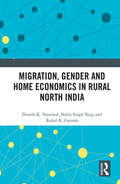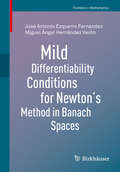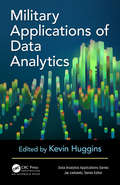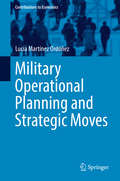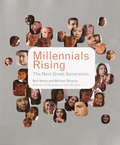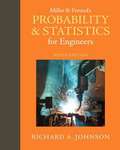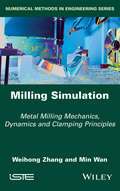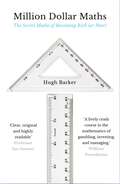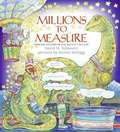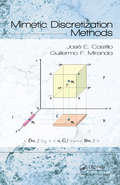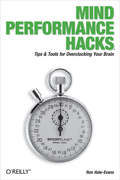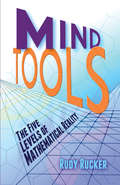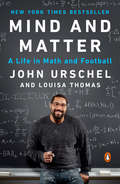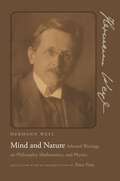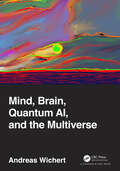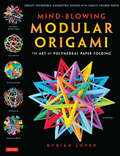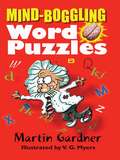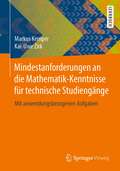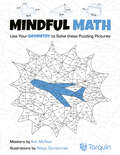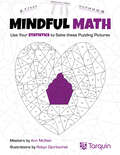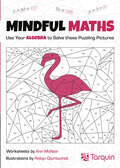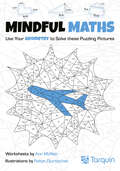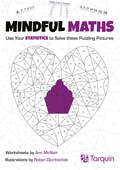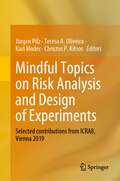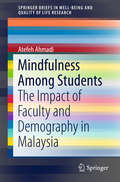- Table View
- List View
Migration, Gender and Home Economics in Rural North India
by Dinesh K. Nauriyal Nalin Singh Negi Rahul K. GairolaThis book critically examines the socio-economic impacts of out-migration on households and gender dynamics in rural northern India. The first of its kind, this study unearths, through detailed regional and demographical research, the ways in which economic and migratory trends of male family members in rural India in general, and hilly regions of Garhwal in particular, affect the wives, children, extended families, and agricultural lands that they have left behind. It offers vital research in how rural India’s socio-economic formations and topographic characteristics can today more effectively contribute to the national and global economy with respect to migratory trends, gender dynamics and home life. Furthermore, it investigates the collapse of agricultural and many other traditional economic activities without a corresponding creation of fresh economic opportunities. This book moreover elucidates how male out-migration from rural to urban centres has greatly re-shaped kinship and economic structures at places of origin and has consequently had a serious impact on the socio-psychological well-being of family members. This book will be of great value to scholars and researchers of development economics, agricultural economics, environment studies, sociology, social anthropology, population studies, gender and women’s studies, social psychology, migration and diaspora studies, South Asian studies and behavioral studies.
Mild Differentiability Conditions for Newton's Method in Banach Spaces (Frontiers in Mathematics)
by José Antonio Ezquerro Fernandez Miguel Ángel Hernández VerónIn this book the authors use a technique based on recurrence relations to study the convergence of the Newton method under mild differentiability conditions on the first derivative of the operator involved. The authors’ technique relies on the construction of a scalar sequence, not majorizing, that satisfies a system of recurrence relations, and guarantees the convergence of the method. The application is user-friendly and has certain advantages over Kantorovich’s majorant principle. First, it allows generalizations to be made of the results obtained under conditions of Newton-Kantorovich type and, second, it improves the results obtained through majorizing sequences. In addition, the authors extend the application of Newton’s method in Banach spaces from the modification of the domain of starting points. As a result, the scope of Kantorovich’s theory for Newton’s method is substantially broadened. Moreover, this technique can be applied to any iterative method. This book is chiefly intended for researchers and (postgraduate) students working on nonlinear equations, as well as scientists in general with an interest in numerical analysis.
Military Applications of Data Analytics (Data Analytics Applications)
by Kevin HugginsMilitary organizations around the world are normally huge producers and consumers of data. Accordingly, they stand to gain from the many benefits associated with data analytics. However, for leaders in defense organizations—either government or industry—accessible use cases are not always available. This book presents a diverse collection of cases that explore the realm of possibilities in military data analytics. These use cases explore such topics as: <li>Context for maritime situation awareness <li>Data analytics for electric power and energy applications <li>Environmental data analytics in military operations <li>Data analytics and training effectiveness evaluation <li>Harnessing single board computers for military data analytics <li>Analytics for military training in virtual reality environments <P><P>A chapter on using single board computers explores their application in a variety of domains, including wireless sensor networks, unmanned vehicles, and cluster computing. The investigation into a process for extracting and codifying expert knowledge provides a practical and useful model for soldiers that can support diagnostics, decision making, analysis of alternatives, and myriad other analytical processes. Data analytics is seen as having a role in military learning, and a chapter in the book describes the ongoing work with the United States Army Research Laboratory to apply data analytics techniques to the design of courses, evaluation of individual and group performances, and the ability to tailor the learning experience to achieve optimal learning outcomes in a minimum amount of time. Another chapter discusses how virtual reality and analytics are transforming training of military personnel. Virtual reality and analytics are also transforming monitoring, decision making, readiness, and operations. <P><P>Military Applications of Data Analytics brings together a collection of technical and application-oriented use cases. It enables decision makers and technologists to make connections between data analytics and such fields as virtual reality and cognitive science that are driving military organizations around the world forward.
Military Operational Planning and Strategic Moves
by Lucía Martínez OrdóñezThis book employs game theory to warfare and in particular to military operations. It aims at scrutinizing the validity of the two ideas that have governed the literature on war and warfighting: One is the Clausewitzian Fog of War, which suggests that he who is able to "see" through the gunsmoke and observe his opponent’s moves before he has to commit to some strategy himself, should be able to gain an advantage over that enemy; the other is the tradition of understanding military conflict as a zero-sum game. Combined, these ideas seem to imply that war always gives rise to a second-mover advantage. This book questions the validity of this presumption at the operational level of military planning. It provides a simple but rigorous game-theoretic framework in order to analyse operational alternatives for a whole range of typical conflicts Western military forces are facing, including the most recent ones such as Anti-Access/Area-Denial and supporting host nations' counterinsurgency campaigns.
Millennials Rising: The Next Great Generation
by William Strauss Neil HoweBy the authors of the bestselling 13th Gen, the first in-depth examination of the Millennials--the generation born after 1982. "Over the next decade, the Millennial Generation will entirely recast the image of youth from downbeat and alienated to upbeat and engaged--with potentially seismic consequences for America." --from Millennials Rising. In this remarkable account, certain to stir the interest of educators, counselors, parents, and people in all types of business as well as young people themselves, Neil Howe and William Strauss introduce the nation to a powerful new generation: the Millennials. They will also explain: Why today's teens are smart, well-behaved, and optimistic, and why you won't hear older people say that. Why they get along so well with their Boomer and Xer parents. Why Millennial collegians will bring a new youth revolution to America's campuses. Why names like "Generation Y" and "Echo Boom" just don't work for today's kids. Having looked at oceans of data, taken their own polls, and talked to hundreds of kids, parents, and teachers, Howe and Strauss explain how Millennials are turning out to be so dramatically different from Xers and boomers and how, in time, they will become the next great generation.
Miller & Freund's Probability and Statistics for Engineers
by Richard A. JohnsonThis book introduces probability and statistics to students of engineering and the physical sciences. It is primarily applications focused but it contains optional enrichment material. Miller & Freund's Probability and Statistics for Engineers is rich in exercises and examples, and explores both elementary probability and basic statistics, with an emphasis on engineering and science applications. The text emphasizes designed experiments, especially two-level factorial design. The Ninth Edition includes several new datasets and examples showing application of statistics in scientific investigations, familiarizing students with the latest methods, and readying them to become real-world engineers and scientists.
Milling Simulation: Metal Milling Mechanics, Dynamics and Clamping Principles
by Weihong Zhang Min WanReliable scheduling in cutting conditions is very important in machining processes, and this requires thorough understanding of the physical behaviors of the machining process, which cannot be achieved without understanding the underlying mechanism of the processes. The book describes the mechanics and dynamics together with the clamping principles in milling processes, and can be used as a guideline for graduate students and research engineers who wish to be effective manufacture engineers and researchers. Many books have focused on common principles, which are suitable for general machining processes, e.g., milling, turning and drilling, etc. This book specifically aims at exploring the mechanics and dynamics of milling processes. Original theoretical derivations and new observations on static cutting force models, dynamic stability models and clamping principles associated with milling processes are classified and detailed. The book is indented as a text for graduate students and machining engineers who wish to intensively learn milling mechanism and machine tool vibration.
Million Dollar Maths: The Secret Maths of Becoming Rich (or Poor)
by Hugh BarkerHow can you turn $1000 into $1 million? What is the best way to beat the lottery odds? When is the best time to take out a loan? How did one group of gamblers bet on hole-in-ones to win £500,000? How can maths help you set up a successful tech start-up? What about proving the Goldbach Conjecture for $1 million?Million Dollar Maths is a fun but invaluable guide to the straightforward and outlandish mathematical strategies that can make you rich. Learn the techniques for growing your everyday finances, as well as the common mistakes to avoid. Discover the skills, both fair and foul, that offer an additional edge when investing and gambling. And discover why we often misunderstand probability and statistics - with troubling financial costs. From making the most of special offers to utilising the power of exponential growth in your investments; from the art of card counting, to inventing the next Google, Million Dollar Maths is the quintessential primer to the myriad ways maths and finance intersect.
Mimetic Discretization Methods
by Jose E. Castillo Guillermo F. MirandaTo help solve physical and engineering problems, mimetic or compatible algebraic discretization methods employ discrete constructs to mimic the continuous identities and theorems found in vector calculus. Mimetic Discretization Methods focuses on the recent mimetic discretization method co-developed by the first author. Based on the Castillo-Grone operators, this simple mimetic discretization method is invariably valid for spatial dimensions no greater than three. The book also presents a numerical method for obtaining corresponding discrete operators that mimic the continuum differential and flux-integral operators, enabling the same order of accuracy in the interior as well as the domain boundary.After an overview of various mimetic approaches and applications, the text discusses the use of continuum mathematical models as a way to motivate the natural use of mimetic methods. The authors also offer basic numerical analysis material, making the book suitable for a course on numerical methods for solving PDEs. The authors cover mimetic differential operators in one, two, and three dimensions and provide a thorough introduction to object-oriented programming and C++. In addition, they describe how their mimetic methods toolkit (MTK)-available online-can be used for the computational implementation of mimetic discretization methods. The text concludes with the application of mimetic methods to structured nonuniform meshes as well as several case studies.Compiling the authors' many concepts and results developed over the years, this book shows how to obtain a robust numerical solution of PDEs using the mimetic discretization approach. It also helps readers compare alternative methods in the literature.
Mind Performance Hacks: Tips & Tools for Overclocking Your Brain
by Ron Hale-EvansYou're smart. This book can make you smarter.Mind Performance Hacks provides real-life tips and tools for overclocking your brain and becoming a better thinker. In the increasingly frenetic pace of today's information economy, managing your life requires hacking your brain. With this book, you'll cut through the clutter and tune up your brain intentionally, safely, and productively.Grounded in current research and theory, but offering practical solutions you can apply immediately, Mind Performance Hacks is filled with life hacks that teach you to:Use mnemonic tricks to remember numbers, names, dates, and other flotsam you need to recallPut down your calculator and perform complex math in your head, with your fingers, or on the back of a napkinSpark your creativity with innovative brainstorming methodsUse effective systems to capture new ideas before they get awayCommunicate in creative new ways-even using artificial languagesMake better decisions by foreseeing problems and finding surprising solutionsImprove your mental fitness with cool tricks and gamesWhile the hugely successful Mind Hacks showed you how your brain works, Mind Performance Hacks shows you how to make it work better.
Mind Tools: The Five Levels of Mathematical Reality
by Rudy RuckerThis reader-friendly volume groups the patterns of mathematics into five archetypes: numbers, space, logic, infinity, and information. Rudy Rucker presents an accessible introduction to each of these important areas, reflecting intelligence gathered from the frontiers of mathematical thought. More than 100 drawings illuminate explorations of digital versus analog processes, logic as a computing tool, communication as information transmission, and other "mind tools.""Mind Tools is an original and fascinating look at various aspects of mathematics that is sure to fascinate the nonmathematician." -- Isaac Asimov "A lighthearted romp through contemporary mathematics. . . . Mind Tools is a delight." -- San Francisco Chronicle"For those who gave up college mathematics for what seemed more liberal arts, Rudy Rucker's book, Mind Tools, is a dazzling refresher course. . . . He rekindles the wonder that can come from contemplating logarithms, exponential curves and transcendental numbers." -- The New York Times Book Review"One of Rucker's greatest assets is his ability to make complexities comprehensible to the general reader without lecturing." -- The Washington Post"Approaching all of mathematics, and everything else, by way of information theory, Dr. Rucker's latest and most exciting book opens vistas of dazzling beauty -- scenes that blend order with chaos, reality with fantasy, that startle you with their depths of impenetrable mystery." -- Martin Gardner
Mind and Matter: A Life in Math and Football
by Louisa Thomas John UrschelFor John Urschel, what began as an insatiable appetite for puzzles as a child developed into mastery of the elegant systems and rules of mathematics. By the time he was thirteen, Urschel was auditing a college-level calculus course. But when he joined his high school football team, a new interest began to eclipse the thrill he felt in the classroom. Football challenged Urschel in an entirely different way, and he became addicted to the physical contact of the sport. After he accepted a scholarship to play at Penn State, his love of math was rekindled. As a Nittany Lion, he refused to sacrifice one passion for the other. Against the odds, Urschel found a way to manage his double life as a scholar and an athlete. While he was an offensive lineman for the Baltimore Ravens, he simultaneously pursued his PhD in mathematics at MIT. Weaving together two separate narratives, Urschel relives for us the most pivotal moments of his bifurcated life. He explains why, after Penn State was sanctioned for the acts of former coach Jerry Sandusky, he declined offers from prestigious universities and refused to abandon his team. He describes his parents’ different influences and their profound effect on him, and he opens up about the correlation between football and CTE and the risks he took for the game he loves. Equally at home discussing Georg Cantor’s work on infinities and Bill Belichick’s playbook, Urschel reveals how each challenge—whether on the field or in the classroom—has brought him closer to understanding the two different halves of his own life, and how reason and emotion, the mind and the body, are always working together. “So often, people want to divide the world into two,” he observes. “Matter and energy. Wave and particle. Athlete and mathematician. Why can’t something (or someone) be both?”
Mind and Nature: Selected Writings on Philosophy, Mathematics, and Physics
by Hermann WeylHermann Weyl (1885-1955) was one of the twentieth century's most important mathematicians, as well as a seminal figure in the development of quantum physics and general relativity. He was also an eloquent writer with a lifelong interest in the philosophical implications of the startling new scientific developments with which he was so involved. Mind and Nature is a collection of Weyl's most important general writings on philosophy, mathematics, and physics, including pieces that have never before been published in any language or translated into English, or that have long been out of print. Complete with Peter Pesic's introduction, notes, and bibliography, these writings reveal an unjustly neglected dimension of a complex and fascinating thinker. In addition, the book includes more than twenty photographs of Weyl and his family and colleagues, many of which are previously unpublished. Included here are Weyl's exposition of his important synthesis of electromagnetism and gravitation, which Einstein at first hailed as "a first-class stroke of genius"; two little-known letters by Weyl and Einstein from 1922 that give their contrasting views on the philosophical implications of modern physics; and an essay on time that contains Weyl's argument that the past is never completed and the present is not a point. Also included are two book-length series of lectures, The Open World (1932) and Mind and Nature (1934), each a masterly exposition of Weyl's views on a range of topics from modern physics and mathematics. Finally, four retrospective essays from Weyl's last decade give his final thoughts on the interrelations among mathematics, philosophy, and physics, intertwined with reflections on the course of his rich life.
Mind, Brain, Quantum AI, and the Multiverse
by Andreas WichertMind, Brain, Quantum AI, and the Multiverse There is a long-lasting controversy concerning our mind and consciousness.This book proposes a connection between the mind, the brain, and the multiverse. The author introduces the main philosophical ideas concerning mind and freedom, and explains the basic principles of computer science, artificial intelligence of brain research, quantum physics, and quantum artificial intelligence. He indicates how we can provide an answer to the problem of the mind and consciousness by describing the nature of the physical world. His proposed explanation includes the Everett Many-Worlds theory. Mind, Brain, Quantum AI, and the Multiverse tries to avoid any non-essential metaphysical speculations. The book is an essential compilation of knowledge in philosophy, computer science, biology, and quantum physics. It is written for readers without any requirements in mathematics, physics, or computer science.
Mind-Blowing Modular Origami: The Art of Polyhedral Paper Folding
by Byriah LoperModular origami is the latest craze in paper folding!These three-dimensional models are created from a number of small pieces of paper that are easily folded and then cleverly fit together to form a spectacular shape. They range from paper polyhedra to bristling buckyballs that are reminiscent of sea urchins-to ornate flower-like spheres.Each piece of paper is held by the tension of the other papers-demonstrating the remarkable hidden properties of paper, which is at the same time flexible but also strong!Author Byriah Loper has been creating modular origami sculptures for just five years, but in that time, he's pushed the upper limits of the art form with some of the largest, most complex geometric paper constructions ever assembled. While many geo-modular origami artists focus on creating dense floral spheres, Byriah has pioneered the open, linear "wire frame" approach, which results in a very complex-looking model that reveals the interior of its form. He exhibits his sculptures annually at the OrigamiUSA convention in New York, and was recently a featured artist at the "Surface to Structure" exhibition at the Cooper Union gallery in the East Village.
Mind-Boggling Word Puzzles
by Martin Gardner V. G. MyersReady to have your mind boggled? World-famous puzzle master Martin Gardner has provided more than 100 ways to give your little gray cells a workout. These unusual puzzles, many of them original, include palindromes, anagrams, rebuses, and logic puzzles. Their whimsical illustrations contain occasional clues and plenty of humor. If you're stumped, you can consult the back of the book for complete solutions. Martin Gardner was renowned for his "Mathematical Games" columns in Scientific American, which he wrote for 25 years. Acclaimed by Newsweek as "The Magician of Math," he published more than 70 books on subjects ranging from science and math to poetry and religion.
Mindestanforderungen an die Mathematik-Kenntnisse für technische Studiengänge: Mit anwendungsbezogenen Aufgaben
by Markus Kemper Kai-Uwe ZirkDem Leser werden neben praxisnahen Beispielen zu jedem Thema auch zahlreiche Übungsaufgaben mit Lösungen zur Verfügung gestellt. Somit kann der zukünftige Studierende sich zunächst orientieren, ob seine Fähigkeiten für das gewünschte Ingenieurstudium bereits ausreichend sind oder ob er mehr hierfür tun muss.
Mindful Math 2: Use Your Geometry to Solve These Puzzling Pictures (Mindful Math #2)
by Robyn Djuritschek Ann McNairA classic Tarquin format that has been used to teach hundreds of thousands—possibly millions—of students over the years! This book is intended to provide a restful way for students to revise and reinforce their geometry skills. On every page there are diagrams made up of small numbered areas. If that number is the answer to one of the geometry questions, then the area has to be colored. When all the target areas of a particular puzzle are colored, then the hidden picture is revealed.
Mindful Math 3: Use Your Statistics to Solve These Puzzling Pictures (Mindful Math #3)
by Robyn Djuritschek Ann McNairA classic Tarquin format that has been used to teach hundreds of thousands - possibly millions - of students over the years! This book is intended to provide a restful way for middle and high school students to revise and reinforce their statistics skills. On every page there are diagrams made up of small numbered areas. If that number is the answer to one of the statistics questions, then the area has to be colored. When all the target areas of a particular puzzle are colored, then the hidden picture is revealed.
Mindful Maths 1: Use Your Algebra to Solve These Puzzling Pictures (Mindful Maths #1)
by Robyn Djuritschek Ann McNairUK version - US version also available. A classic Tarquin format that has been used to teach hundreds of thousands - possibly millions - of students over the years! This book is intended to provide a restful way for students to revise and reinforce their algebra skills. On every page there are diagrams made up of small numbered areas. If that number is the answer to one of the algebra questions, then the area has to be coloured. When all the target areas of a particular puzzle are coloured, then the hidden picture is revealed.
Mindful Maths 2: Use Your Geometry to Solve These Puzzling Pictures (Mindful Maths #1)
by Robyn Djuritschek Ann McNairUK version - US version also available. A classic Tarquin format that has been used to teach hundreds of thousands - possibly millions - of students over the years! This book is intended to provide a restful way for students to revise and reinforce their GEOMETRY skills. On every page there are diagrams made up of small numbered areas. If that number is the answer to one of the algebra questions, then the area has to be coloured. When all the target areas of a particular puzzle are coloured, then the hidden picture is revealed.
Mindful Maths 3: Use Your Statistics to Solve These Puzzling Pictures (Mindful Maths)
by Robyn Djuritschek Ann McNairUK version - US version also available. A classic Tarquin format that has been used to teach hundreds of thousands - possibly millions - of students over the years! This book is intended to provide a restful way for students to revise and reinforce their STATISTICS skills. On every page there are diagrams made up of small numbered areas. If that number is the answer to one of the algebra questions, then the area has to be coloured. When all the target areas of a particular puzzle are coloured, then the hidden picture is revealed.
Mindful Topics on Risk Analysis and Design of Experiments: Selected contributions from ICRA8, Vienna 2019
by Christos P. Kitsos Teresa A. Oliveira Jürgen Pilz Karl ModerThis book provides an overview of the role of statistics in Risk Analysis, by addressing theory, methodology and applications covering the broad scope of risk assessment in life sciences and public health, environmental science as well as in economics and finance. Experimental Design plays a key role in many of these areas, therefore there is special attention paid to joining Risk Analysis and Experimental Design topics. The contributions of this volume originate from the 8th International Conference on Risk Analysis (23-26 April, 2019, Vienna). The conference brought together researchers and practitioners working in the field of Risk Analysis. The most important contributions at the conference have been refereed and developed into chapters to show the latest developments in the field.
Mindfulness Among Students
by Atefeh AhmadiThis book utilizes quantitative research methods to identify the relationship between the level of mindfulness and demographic factors among university students in Malaysia. More specifically, it explores the mindfulness, its benefits and relationship with demography, and the field of study of university students. While Mindfulness Attention Awareness Scale questionnaire (Brown & Rayan, 2003) was used for the quantitative approach, findings in the book were also ascertained through descriptive and co-relational statistics test. The research presented in the book moves beyond the individual level of mindfulness towards "organizational mindfulness", and will be useful for psychotherapists, high school counselors and teachers.
